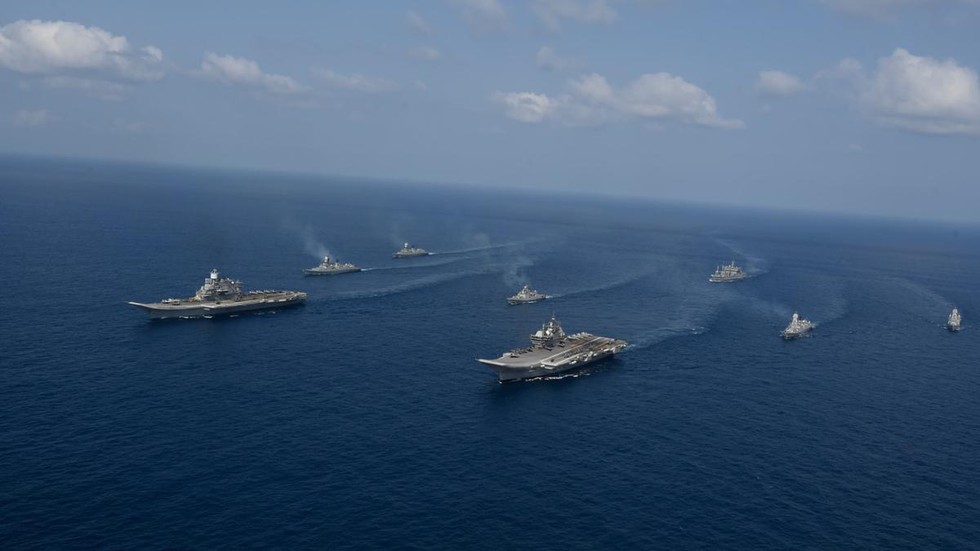Carrier aviation, often referred to as the “queen of the seas,” represents one of the most formidable assets in a nation’s military arsenal. The aircraft carrier, essentially a floating airbase, serves as a mobile force projection platform, capable of extending a nation’s military reach across oceans and continents.
Unmatched Power Projection
Carrier aviation provides unmatched power projection capabilities due to its mobility and survivability. Unlike land-based airfields, which are stationary and vulnerable to enemy attacks, aircraft carriers offer unparalleled mobility and survivability, enabling nations to deploy air power swiftly and decisively to distant theaters of operation.
Force Multiplier in Coalition Operations
Carrier aviation serves as a force multiplier in coalition operations and multinational alliances. Through carrier strike groups, nations can integrate their air, sea, and land forces seamlessly, enhancing interoperability and collective defense capabilities, thus amplifying the effectiveness of military operations and fostering international cooperation.
Facilitator of Expeditionary Warfare
Carrier aviation facilitates expeditionary warfare and crisis response missions by rapidly deploying combat aircraft, reconnaissance assets, and humanitarian aid supplies to affected regions in times of conflict or humanitarian crises. This responsiveness and versatility make carrier aviation indispensable in addressing dynamic and unpredictable security threats worldwide.
Tool for Sea Control and Maritime Dominance
Carrier aviation serves as a potent tool for sea control and maritime dominance by projecting air power over vast maritime expanses, enforcing maritime law, safeguarding vital sea lanes, and protecting maritime commerce from piracy and illicit activities. This capability preserves global stability, economic prosperity, and underpins a nation’s status as a maritime power.
Conclusion
The significance of carrier aviation in modern warfare cannot be overstated. As the cornerstone of naval power projection, carrier aviation enables nations to exert influence, protect interests, and promote security in an increasingly complex and interconnected world. Its versatility, mobility, and firepower make it an indispensable asset for safeguarding peace and stability across the oceans of the globe.
Multiple Choice Questions (MCQs):
- What does carrier aviation represent in a nation’s military arsenal?
- A) Land-based airfields
- B) A floating airbase
- C) Underwater defense systems
- D) Ground-based missile launchers
- Answer: B) A floating airbase
- What is the primary advantage of carrier aviation over land-based airfields?
- A) Higher altitude capabilities
- B) Greater number of aircraft
- C) Mobility and survivability
- D) Faster aircraft turnaround time
- Answer: C) Mobility and survivability
- How does carrier aviation contribute to coalition operations?
- A) By deploying ground troops
- B) By integrating air, sea, and land forces
- C) By providing logistical support only
- D) By conducting solo missions
- Answer: B) By integrating air, sea, and land forces
- What role does carrier aviation play in expeditionary warfare?
- A) Providing stationary defense
- B) Rapid deployment of assets
- C) Limited engagement in crises
- D) Focusing solely on ground operations
- Answer: B) Rapid deployment of assets
- What function does carrier aviation serve in maritime dominance?
- A) Enforcing airspace regulations
- B) Protecting land borders
- C) Safeguarding sea lanes
- D) Conducting underwater surveillance
- Answer: C) Safeguarding sea lanes
